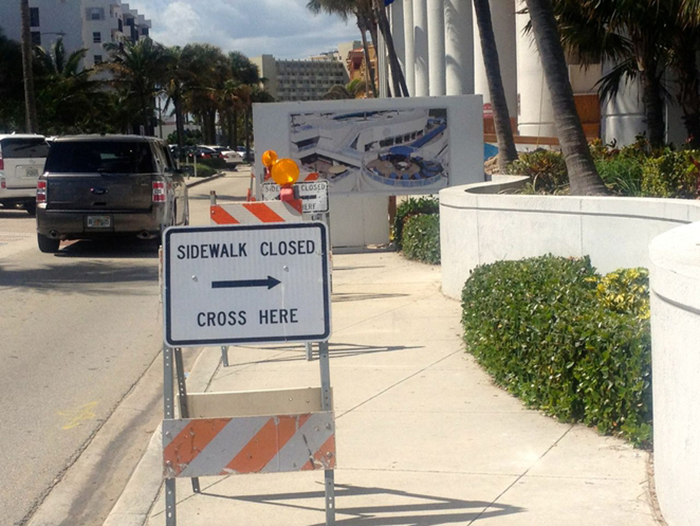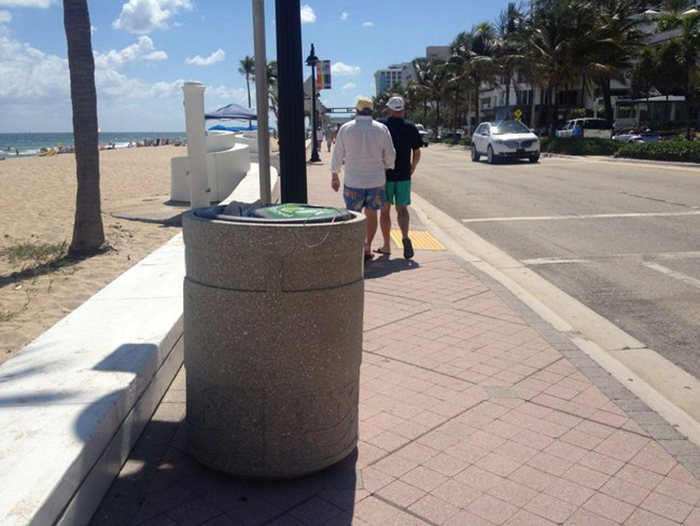I am in Fort Lauderdale, Florida, for a week to give my mother a break from the Canadian winter. She has trouble walking so we rented a wheelchair to push her around in, which gives you a whole different perspective on urban design. The most interesting thing about Fort Lauderdale’s attempts to make the city pedestrian, bike and wheelchair friendly is that they are obviously trying; there are bike lanes, pedestrian crossings, ramps at intersections, a beach-side pedestrian walkway. But in many ways, they fail in their execution and management.
Perhaps the most egregious management fail was right outside our hotel. The main entrance is on a side street, and people are walking in an out all the time to get to the beach. But as can be seen in the top photo, the entire sidewalk is occupied by a construction hoarding. This sign points right into a concrete wall. Everyone, including those pushing wheelchairs, is forced into the street.
In most cities, it is a legal requirement during construction projects to provide a safe walkway for pedestrians. In Copenhagen, they even do it for bike routes. In Fort Lauderdale, the hotel gets to block the entire road. I did find an alternate route, but it was not wheelchair accessible or clearly marked.
There’s an attractive brick paved pedestrian walkway along the beach that gets a lot of use, although not at the time of day I am taking this photo. It’s nominally about six feet wide. There’s a bike lane running beside it.
The problem is, it is full of obstructions that narrow it significantly. Between bollards and lamp posts installed when it was designed and things like this ridiculous giant concrete garbage bin that takes up half the sidewalk, it is impossibly narrow. Runners take to the bike lane, the beach wall, or just have to stop running. There are a lot of seniors moving rather slowly and even younger pedestrians have trouble getting around a gaggle of them. It’s just too narrow and much of the time, too crowded.
Then there is the bike infrastructure. Here again, they try, with these silly and expensive bike things that you can lock maybe two bikes to, with enough stainless steel to make a rack that might hold a dozen bikes. They are at least a block apart, and these blocks are not short.
Consequently any building that has any kind of railing puts up these scary signs that don’t make cyclists feel particularly welcome.
The City of Fort Lauderdale says on their website that “Creating a safe and accessible pedestrian and bicycle network is an important component to the City’s overall vision of creating a Livable City for all residents.” They recognize “the quality of life, economic development and environmental benefits of a transportation system that is oriented toward Complete Streets.”
There is no question that they are really trying; all the key elements are there. But it’s in the details; they need more bike rings, smaller garbage cans and most importantly, they have to stop letting the developers run riot over public space. But it’s a great start.
Source: Treehugger
March 3, 2014
By Lloyd Alter
http://www.treehugger.com/urban-design/its-all-details-when-you-are-trying-build-bike-and-pedestrian-friendly-city.html












